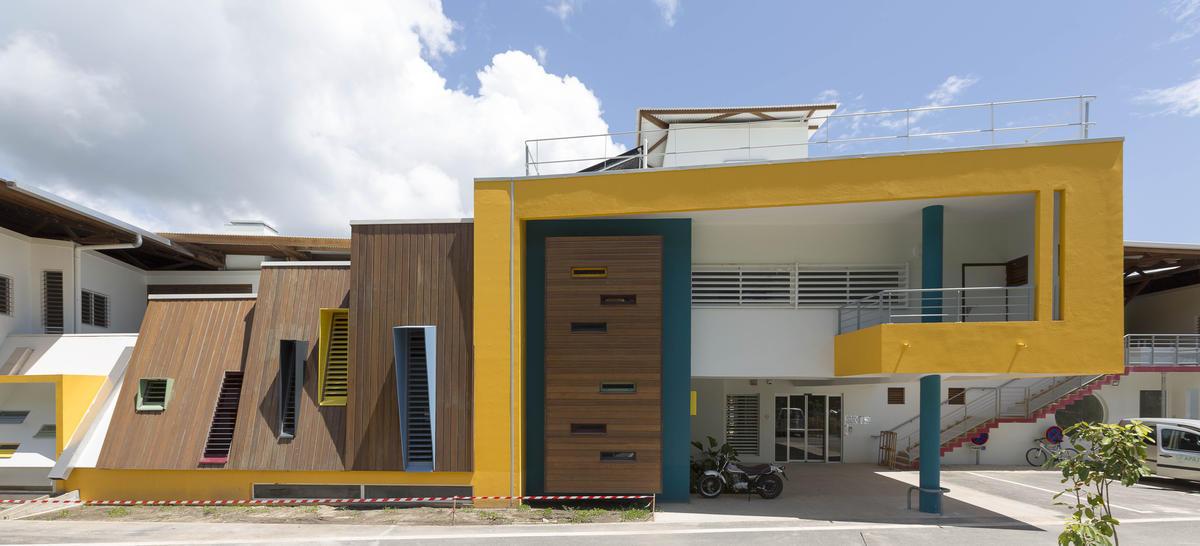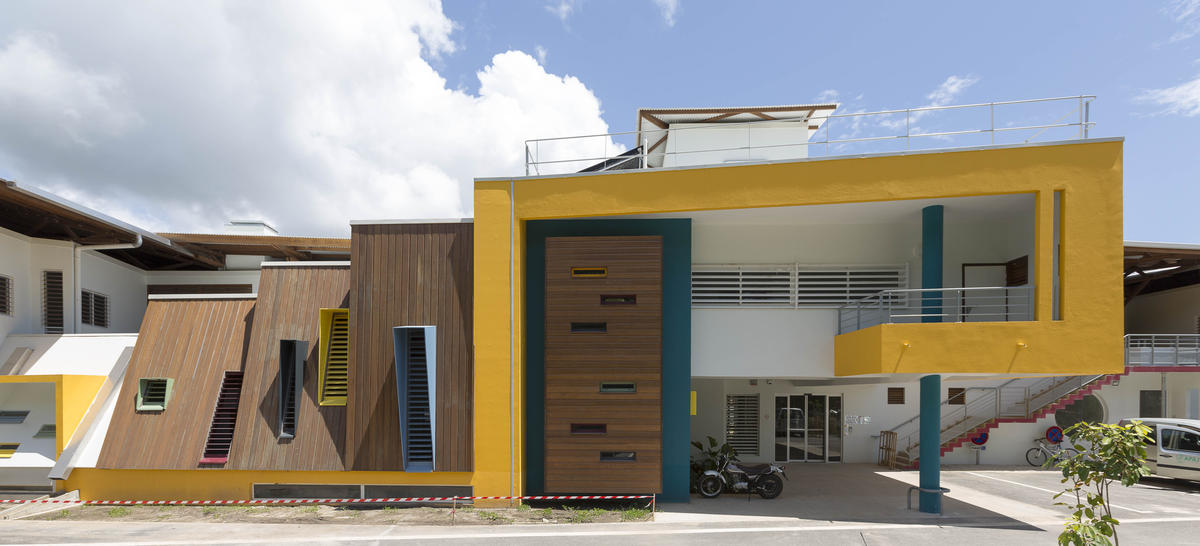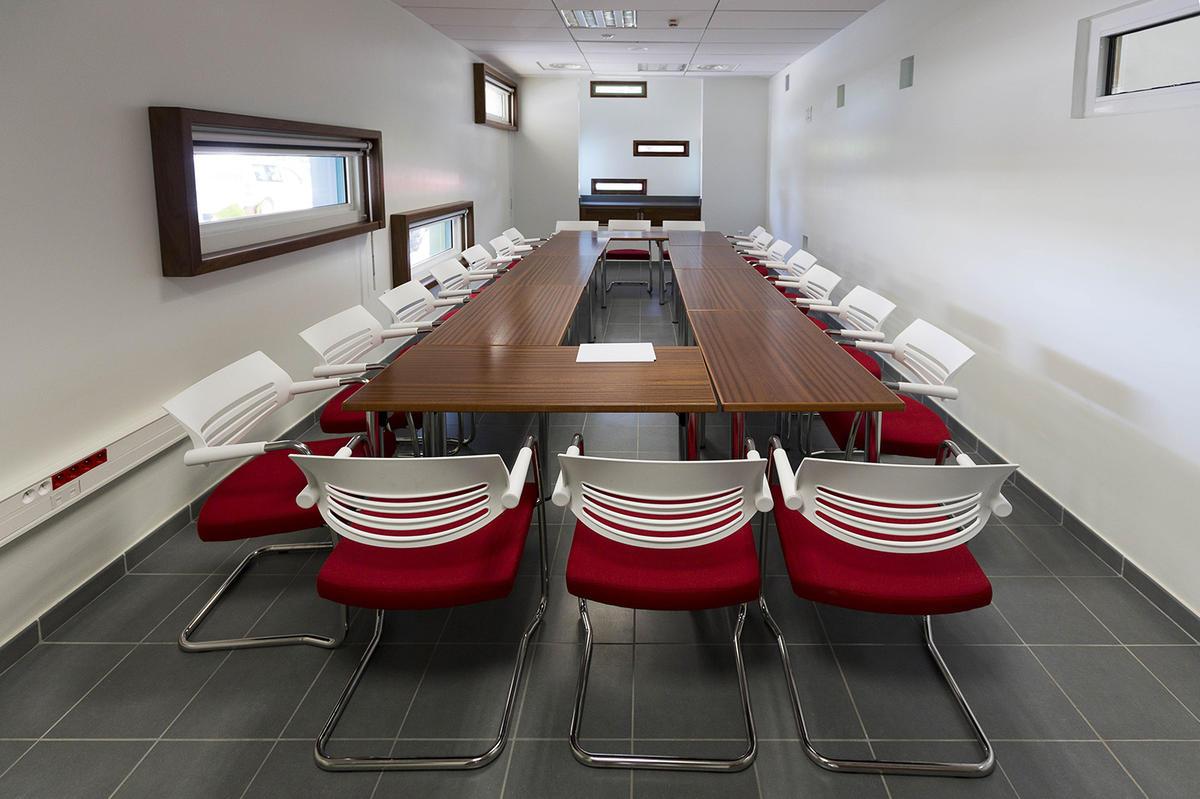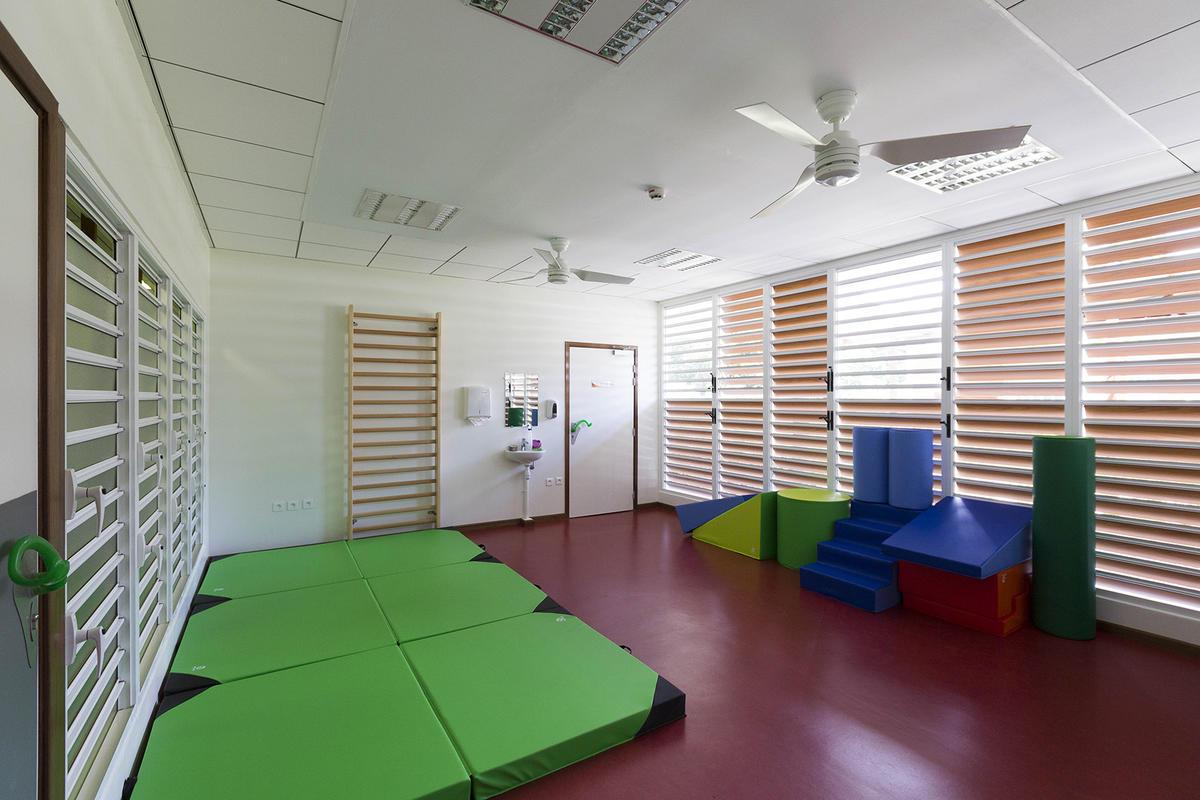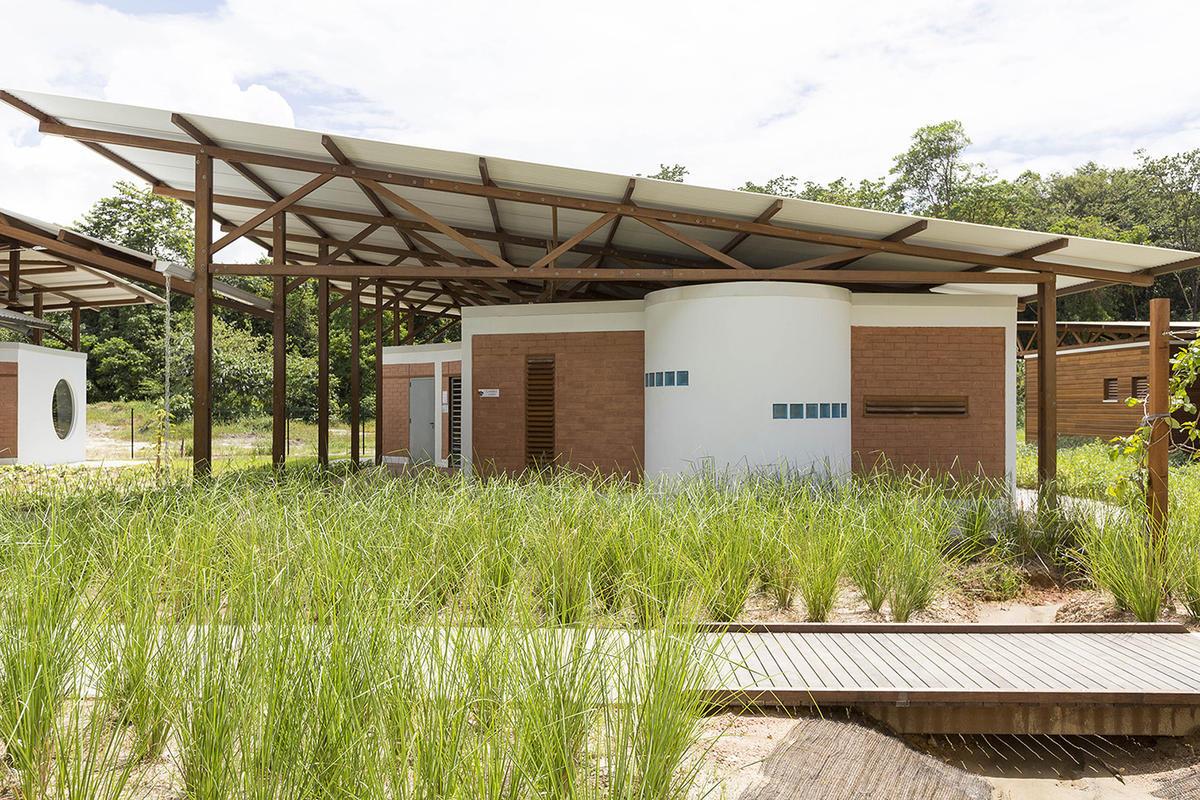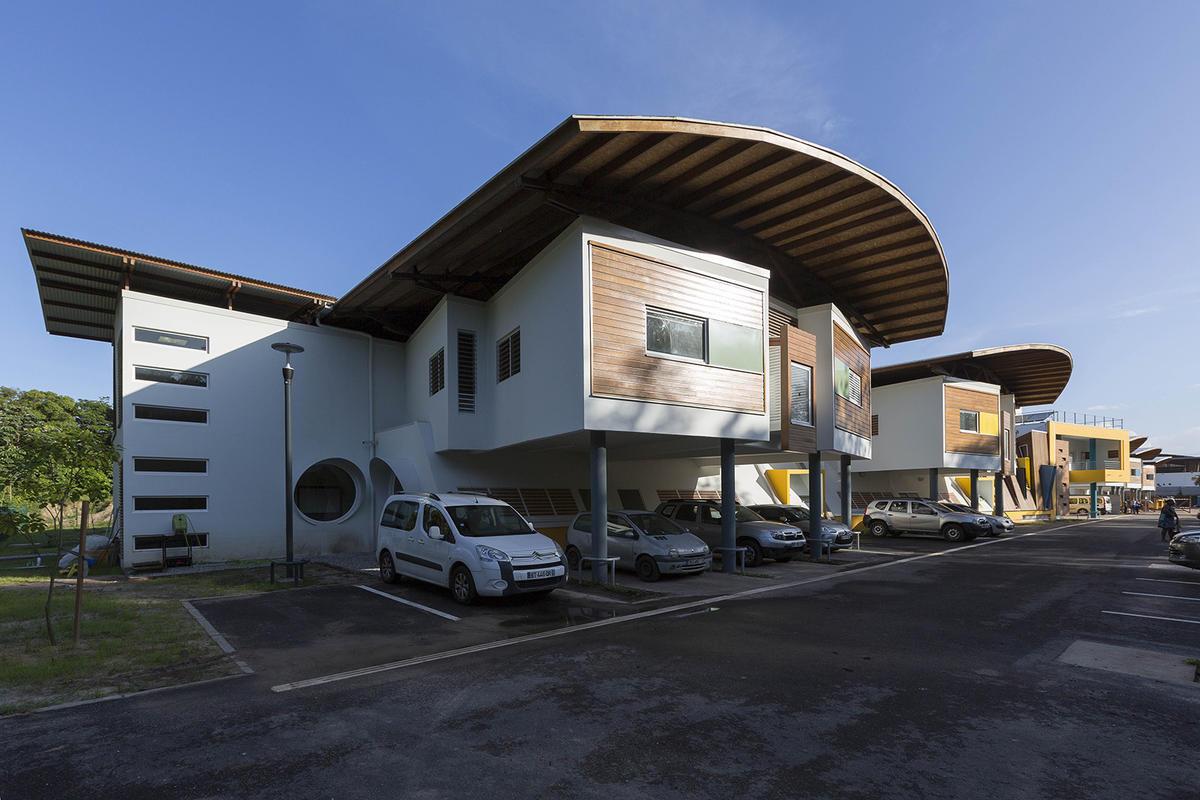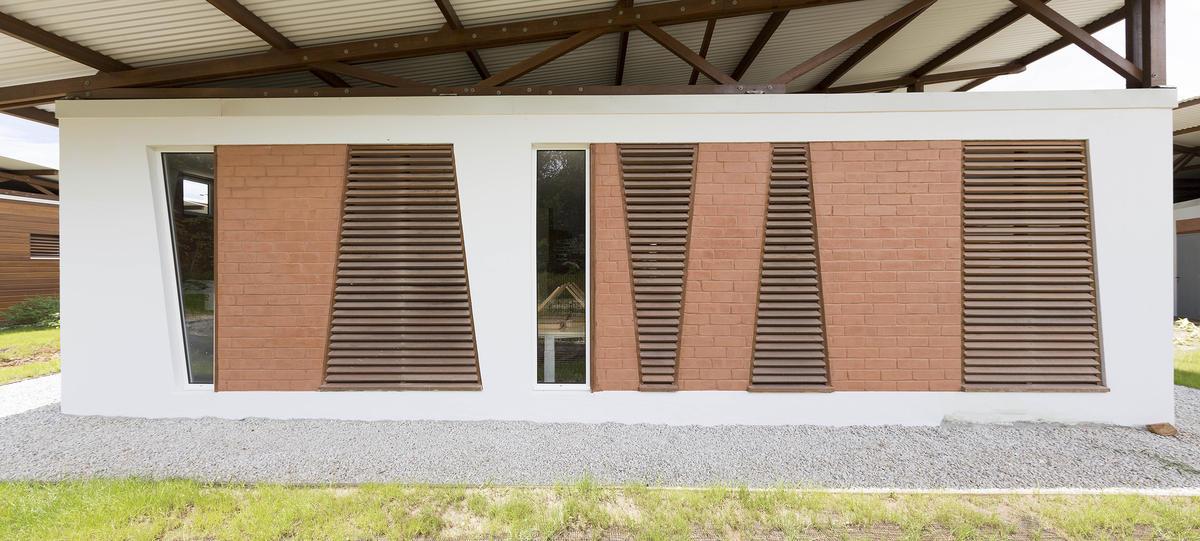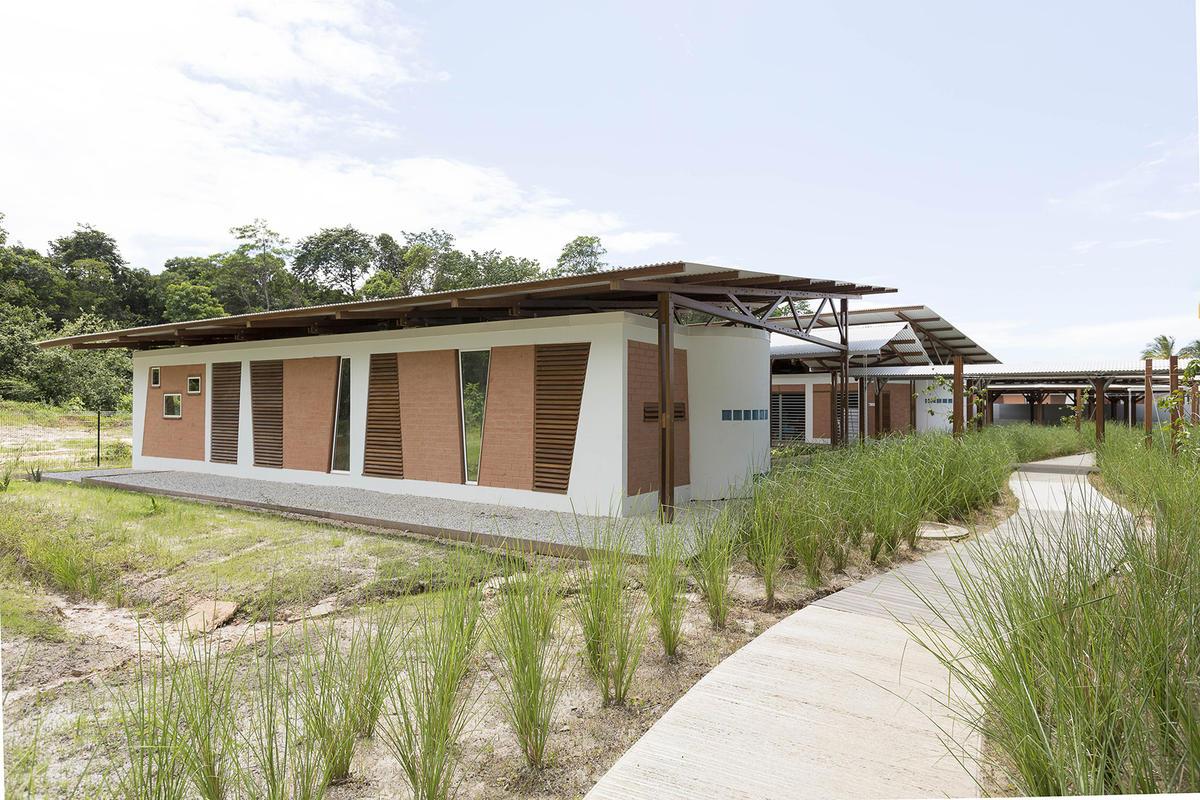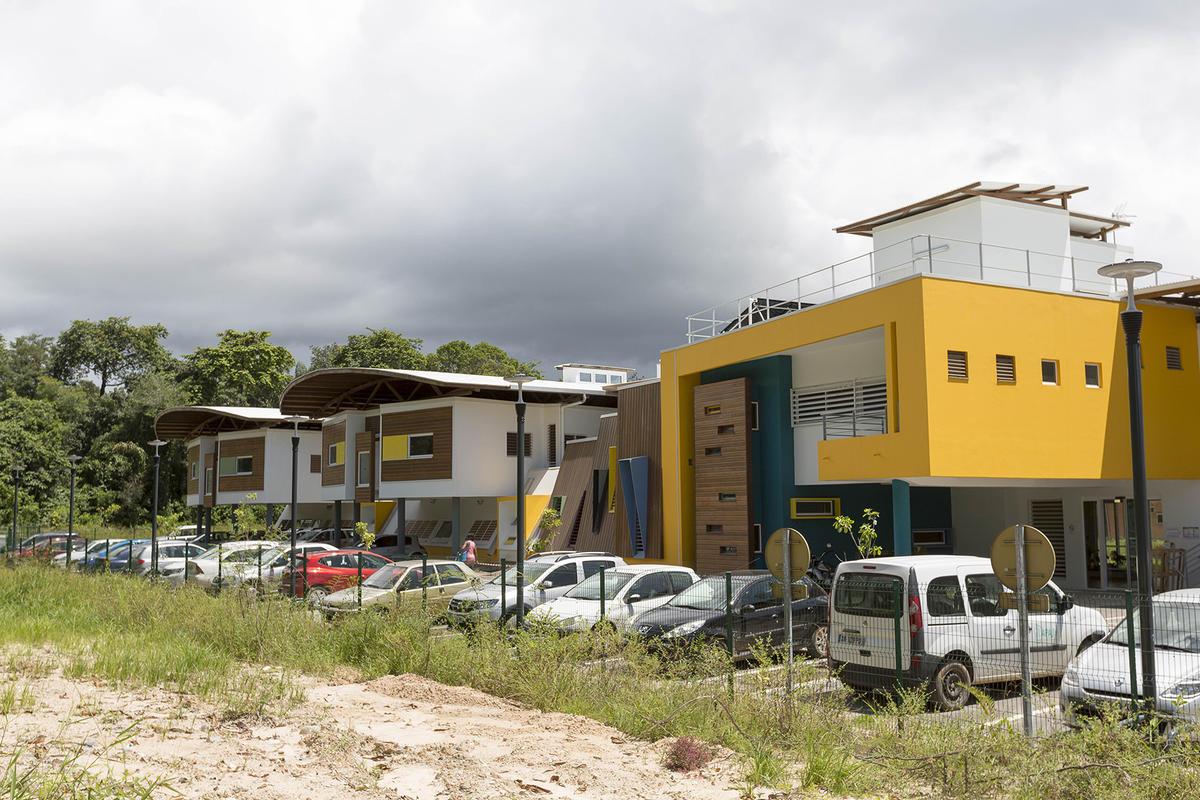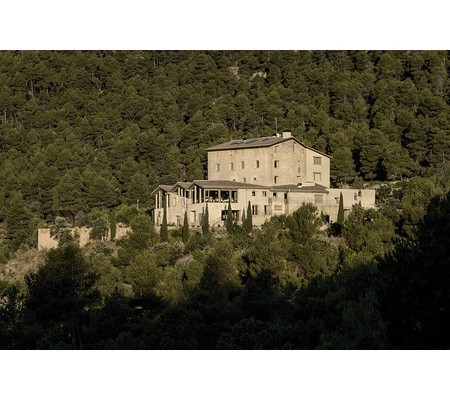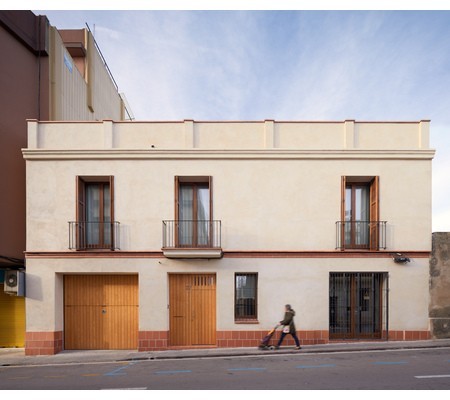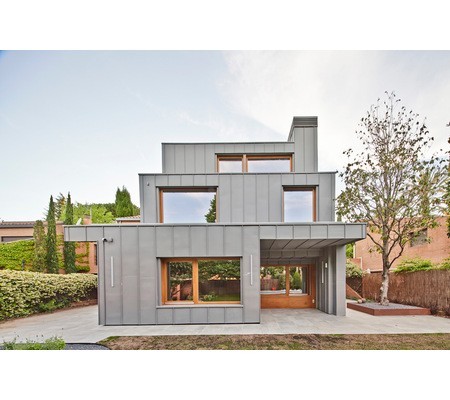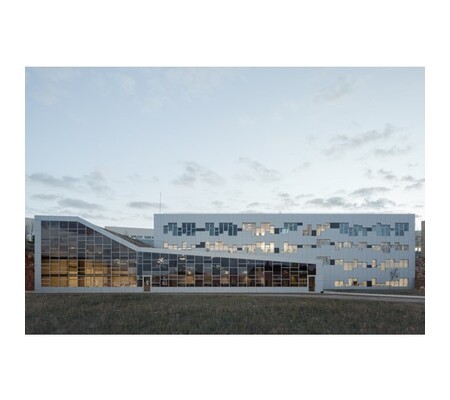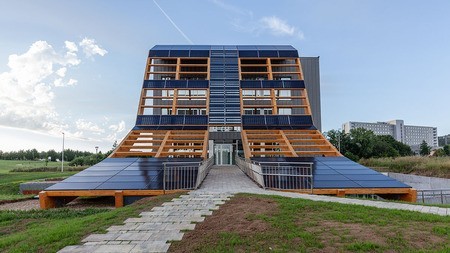IME Yepi Kaz
New Construction
- Building Type : Nursing home or Retirement home
- Construction Year : 2015
- Delivery year : 2015
- Address 1 - street : Remire Montjoly 97354 GUYANE FRANçAISE, France
- Climate zone : [Af] Tropical Wet. No dry season.
- Net Floor Area : 4 950 m2
- Construction/refurbishment cost : 12 700 000 €
- Number of Bed : 40 Bed
- Cost/m2 : 2565.66 €/m2
-
Primary energy need
120 kWhep/m2.an
(Calculation method : )
The IME Yépi Kaz project aimed to respond to the crucial lack of this type of equipment in the Antilles-Guyana area and to allow children to stay in Guyana with their families.
The association wanted a very functional building, but also territorially rooted.
The project design was done with a bioclimatic approach and energy efficiency based on the Amazonian Environmental Quality approach(QEA).
In agreement with users, conditioned spaces have been limited to the maximum and Guyanese climate elements were utilized to create different atmospheres offer to stimulate sensory children.
The architecture of the project significantly recourse to local material with low embodied energy expressed by its rich and dynamic volumes as well as through its atmosphere the role of the establishment: the awakening and stimulation.
Sustainable development approach of the project owner
To be consistent with the development plan which aimed to keep children in Guyana, the client wanted a building that fully inscribed in an Amazonian Environmental Quality approach is a rational adaptation of the approach HQE in Guyana.Architectural description
The project is divided into two distinct parts: the main building which hosts business premises, accommodation units and administration in front of the site, and living units in ground floor, in the back of the ground.The implementation on the site meets the will to treat the majority of local operating bioclimatic with a natural ventilation strategy and sun protection strategy. The main building is therefore developing its facade facing east to catch the wind while having adapted sunscreens. It expresses its dynamism, its colors, and its developed forms the purpose of the institution which aims to promote the development of children greeted by various sensory stimuli.
The facades of the administration upstairs are oriented north and south to minimize solar gain.
The main building develops front length of land and hosts on the ground floor lobby, business premises (physical therapy rooms, occupational therapy, etc.), medical and social services and local staff . The lobby, the center distributes all these spaces and provides access to the living units at the rear of the site, in a sensory garden.
The floor houses the administration in the central part, and the accommodation units of both sides, organized in staggered so as to have for each room with two windows on different fronts, one to wind, to ensure good cross natural ventilation, even with the door closed for reasons of fire regulations (type J 4th category with sleeping areas).
The entire site is landscaped and peaceful acoustically. The living units are part of plant boxes that connect sensory walk alternating flooring, plant species, arbors, etc ...
In the equatorial climate Guiana to the weak trade winds, bioclimatic approach begins with optimum sun protection all local, continues with a envelope design promoting cross ventilation for the discharge of internal loads and s 'ends with the use of efficient equipment to ensure comfort.
The prevailing winds are East-North East, average speed between 1.5 and 3 m / s. Components or parts of the main building naturally ventilated are oriented along the axis of the prevailing winds, the living units at the rear have four ventilated facades with an average porosity of about 30%.
The arrangement of the rooms allows staggered to have two windows consist of mobile blinds on two separate fronts.
The business premises on the ground floor are broken by large sets of glazed facade blinds and circulations for a minimum porosity of 60%.
Circulations are naturally ventilated by complex wooden blinds fixed.
All air-conditioned spaces or natural ventilation are equipped with ceiling fans ceiling performance (Hunter brand) to compensate for the lack of wind on some days and create comfort through evapotranspiration.
The building was designed to stimulate by its architecture and ambience foster children. Thus, architecture deploys dynamic and varied volumes never repetitive. Natural light, sensed in various ways diffuses to the spaces of alternating illuminated areas more or less, decorated with color sets as units. A particular work was conducted on the diversity of ceilings, volume material and color to avoid monotony for children spending much of the day lengthened.
The diversity of materials involved in the diversity of environments, visually as sensory. Changes coverings (wood, soft ground, brushed concrete, ribbed, etc.) at the traffic part of this diversity by offering a varied experience when traveling in a wheelchair.
The high porosity of facades allows air circulation in all the EMI spaces; the internal organization of the parts and the presence of large internal jealousies follow the recommendations of the ventilation study by Meteodyn.
The living entities treated as independent pavilions allow to limit noise nuisance from the premises.
The landscaped treating the entire site reinforces all these architectural arrangements by bringing fresh, smells and even sounds depending on the species chosen.
The building is mainly treated natural ventilation and surrounded by planted areas, the quality of the indoor air is guaranteed. Conditioned spaces have air new treaty.
All premises are accessible course, without artifice, whatever the handicap ergonomics of space, light contrasts, directional guides, specific operating members (handle "ULNA"), etc ...
The building works almost permanently autonomy in natural light, contributing to a better overall comfort and having a beneficial effect on the health of occupants.
See more details about this project
http://www.acapa-architecture.com/projets_hosp_ime.htmlhttp://www.apajhguyane.org/etablissements-services/polyhandicap/ime
http://www.apajh.org/index.php/lapajh-en-regions/1333-christiane-taubira-visite-lime-apajh-yepi-kaz-en-guyane-
Stakeholders
Contractor
APAJH GUYANE
Gildas LeGuern : [email protected] / 05 94 25 05 05
http://www.apajhguyane.orgAssistance to the Contracting Authority
CED GUYANE
Manolé Pied : [email protected] / 05 94 28 57 57
Designer
ACAPA
Frédéric Pujol : [email protected] / 0594 30 48 40
http://www.acapa-guyane.comThermal consultancy agency
Robert Celaire Consultants
Robert Celaire : [email protected] / 04 42 92 84 19
Thermal consultancy agency
ALTER
Laurent Pipet : [email protected] / 06 94 27 04 99
Contracting method
Separate batches
Type of market
Table 'c21_spain.rex_market_type' doesn't exist
Energy consumption
- 120,00 kWhep/m2.an
- 250,00 kWhep/m2.an
Real final energy consumption
46,00 kWhef/m2.an
90,00 kWhef/m2.an
2,25 kWhef/m2.an
2 015
Envelope performance
- 0,60 W.m-2.K-1
Systems
- No heating system
- Individual electric boiler
- Solar Thermal
- Roof-top
- VRV Syst. (Variable refrigerant Volume)
- Natural ventilation
- Solar Thermal
- 13,00 % 63 MWh/an
Urban environment
- 10 000,00 m2
- 33,00 %
- 6 783,00
Product
Mud Brick

B2TG
http://www.labriquedeguyane.com/Table 'c21_spain.innov_category' doesn't exist SELECT one.innov_category AS current,two.innov_category AS parentFROM innov_category AS oneINNER JOIN innov_category AS two ON one.parent_id = two.idWHERE one.state=1AND one.id = '6'
Mud bricks stabilized and locally produced, very low gray energy material.
This product, posed for the first time in Guyana, was very well accepted, first by its aesthetic side and on the other side by its local production.The association was very attached to the project to be in line with the purpose of the building, that allow children to remain in Guyana, close to their families.
Guyane Wood

CBCI
http://www.guyane-bois.netTable 'c21_spain.innov_category' doesn't exist SELECT one.innov_category AS current,two.innov_category AS parentFROM innov_category AS oneINNER JOIN innov_category AS two ON one.parent_id = two.idWHERE one.state=1AND one.id = '7'
Realization of all structures, of collaborating wood -concrete floors and part of Guyana wooden facades. Guyana is PEFC certified wood and many species are naturally durable , including " Angelica " used on this project.
The Guyana wood is high quality material, produced locally. Its extensive use has been popular for the same reasons as the mud brick.
Construction and exploitation costs
- 2 200,00 €
- 132 220,00 €
- 967 845 €
- 13 500 000 €
- 96 000 €
Energy bill
- 31 000,00 €
GHG emissions
- 67,50 KgCO2/m2/an




